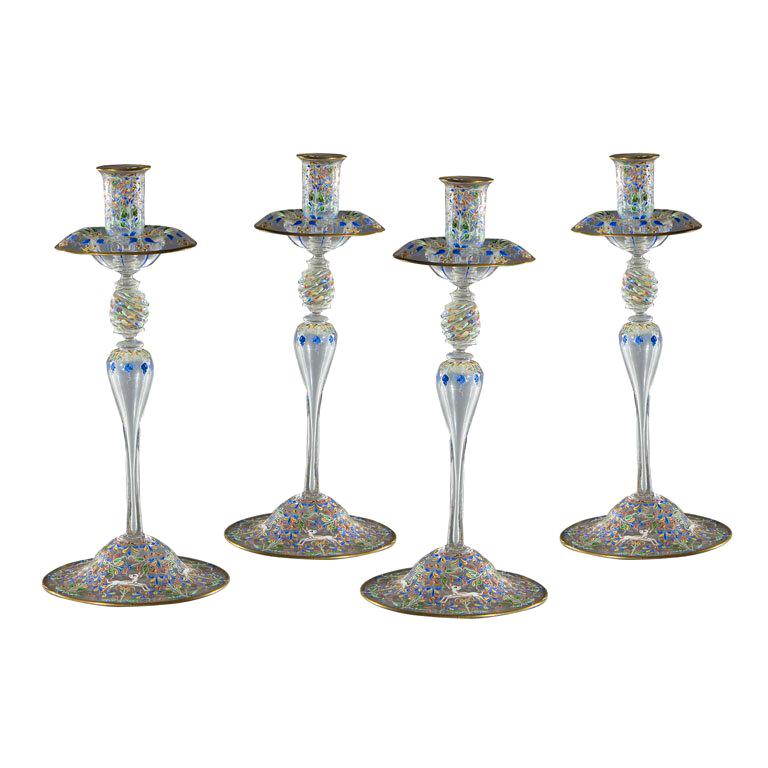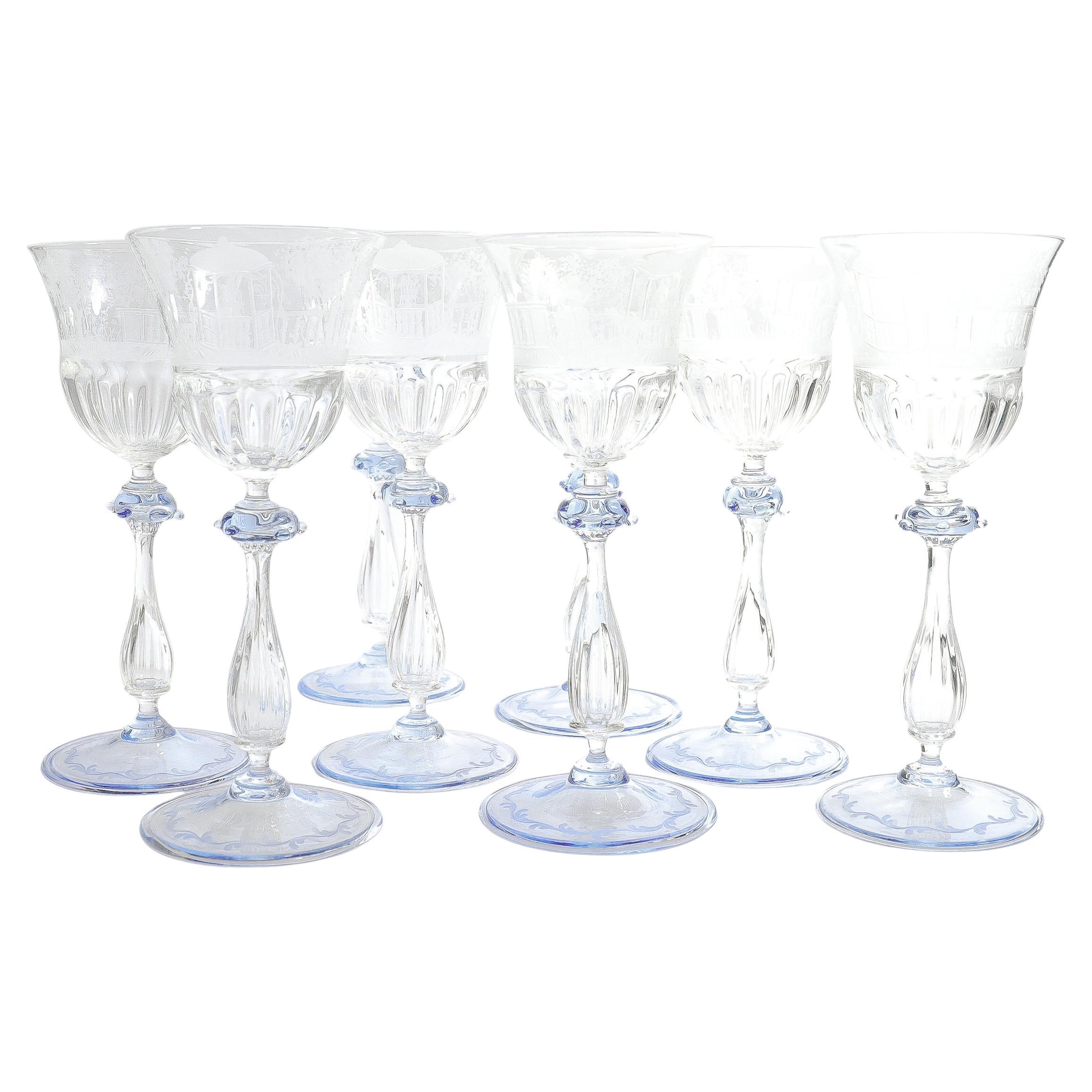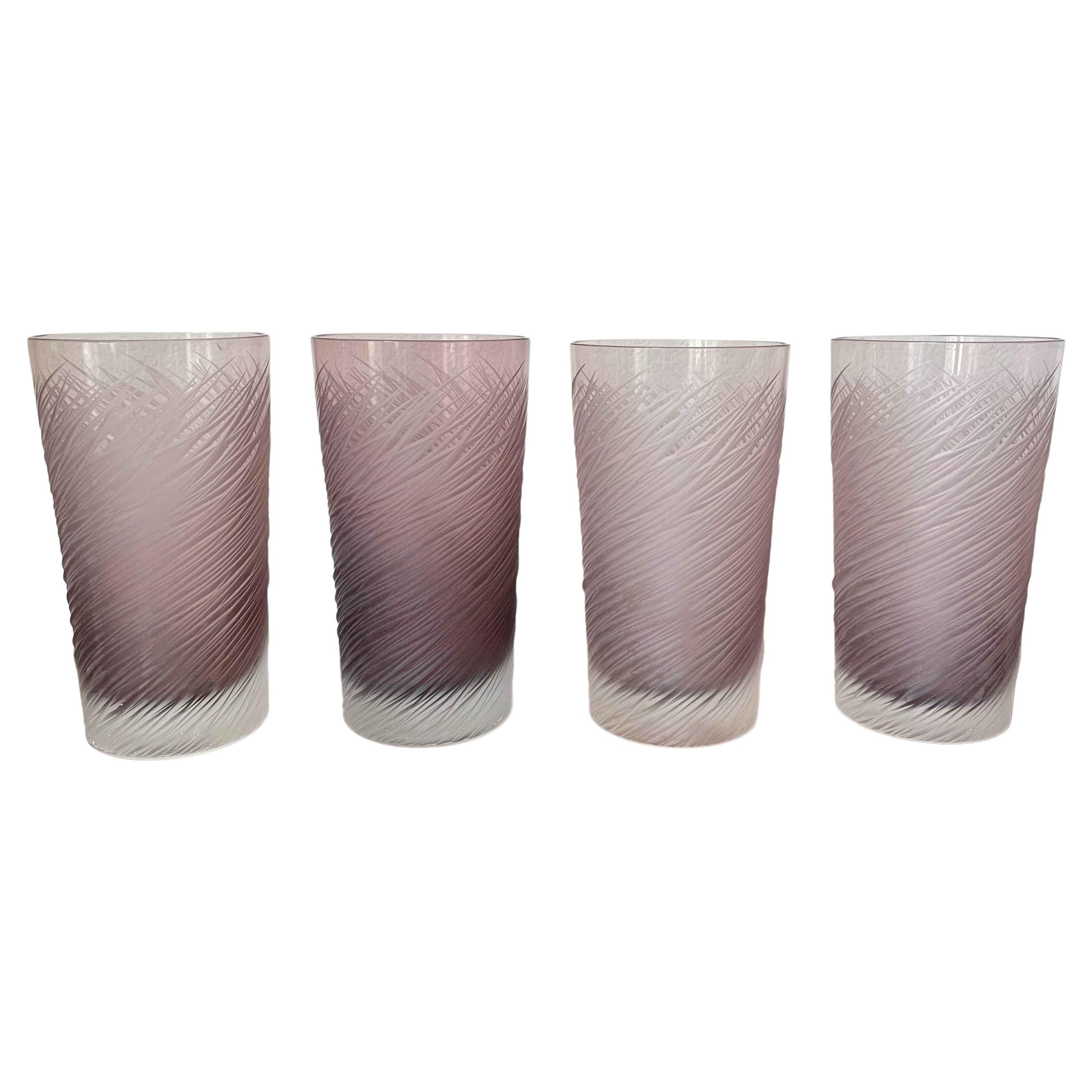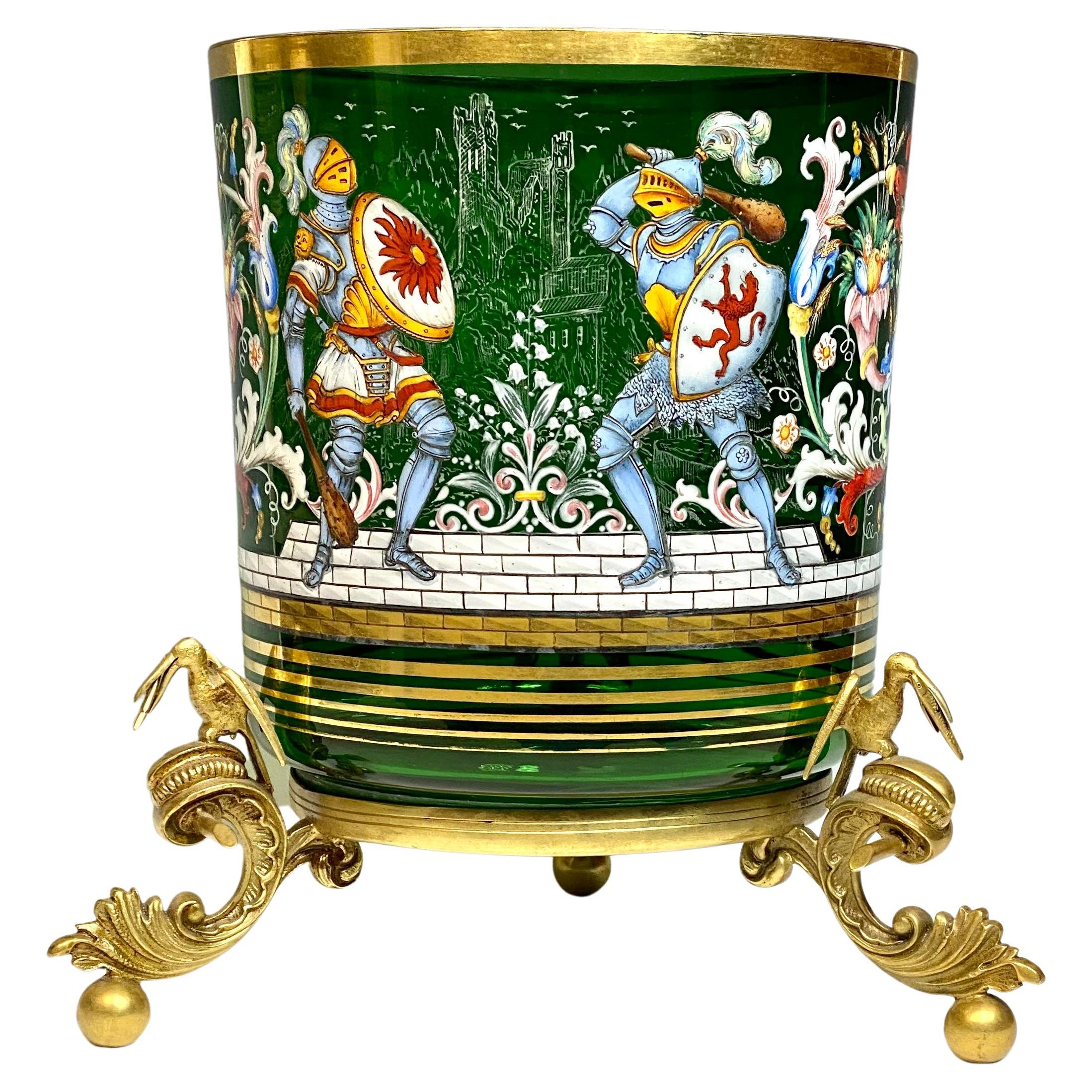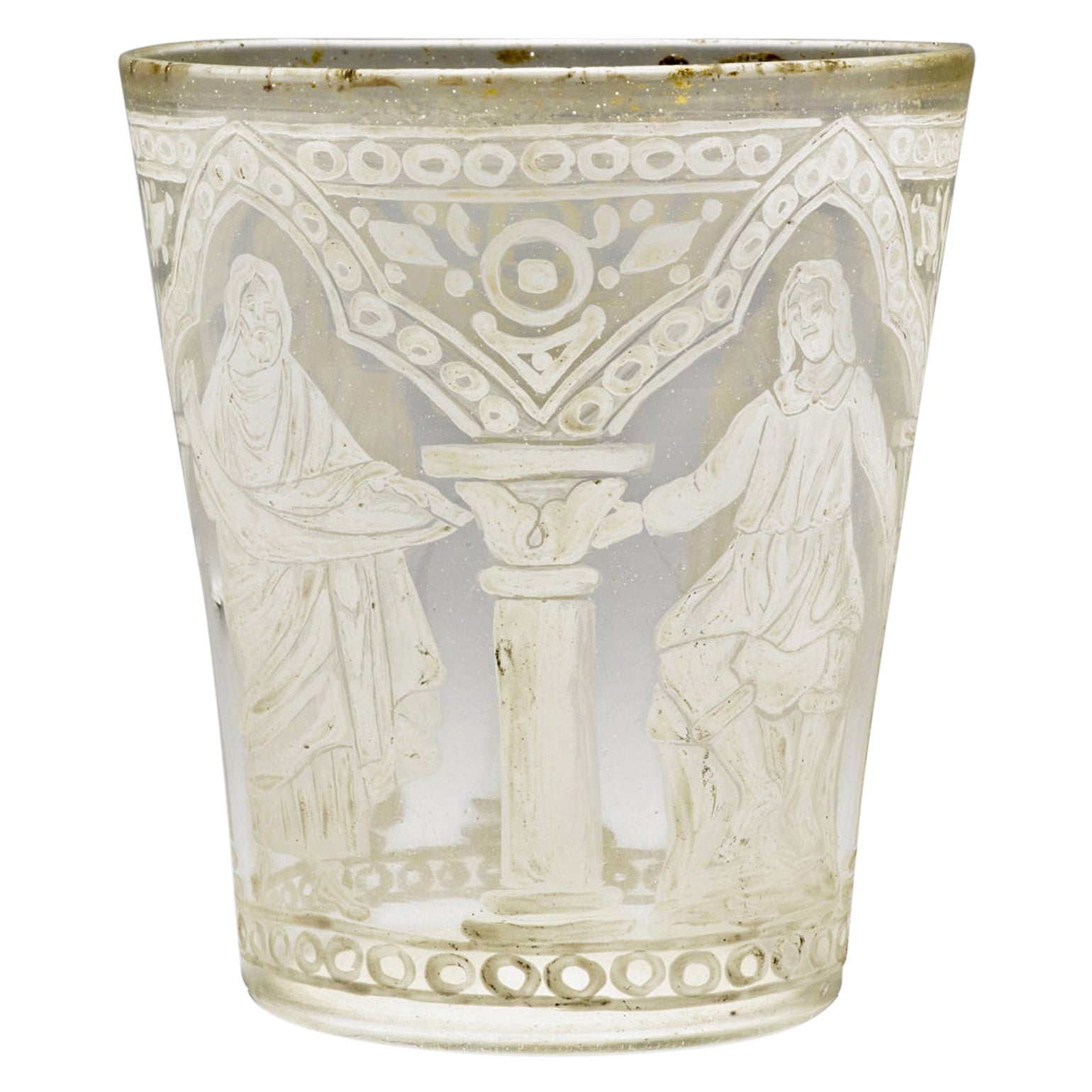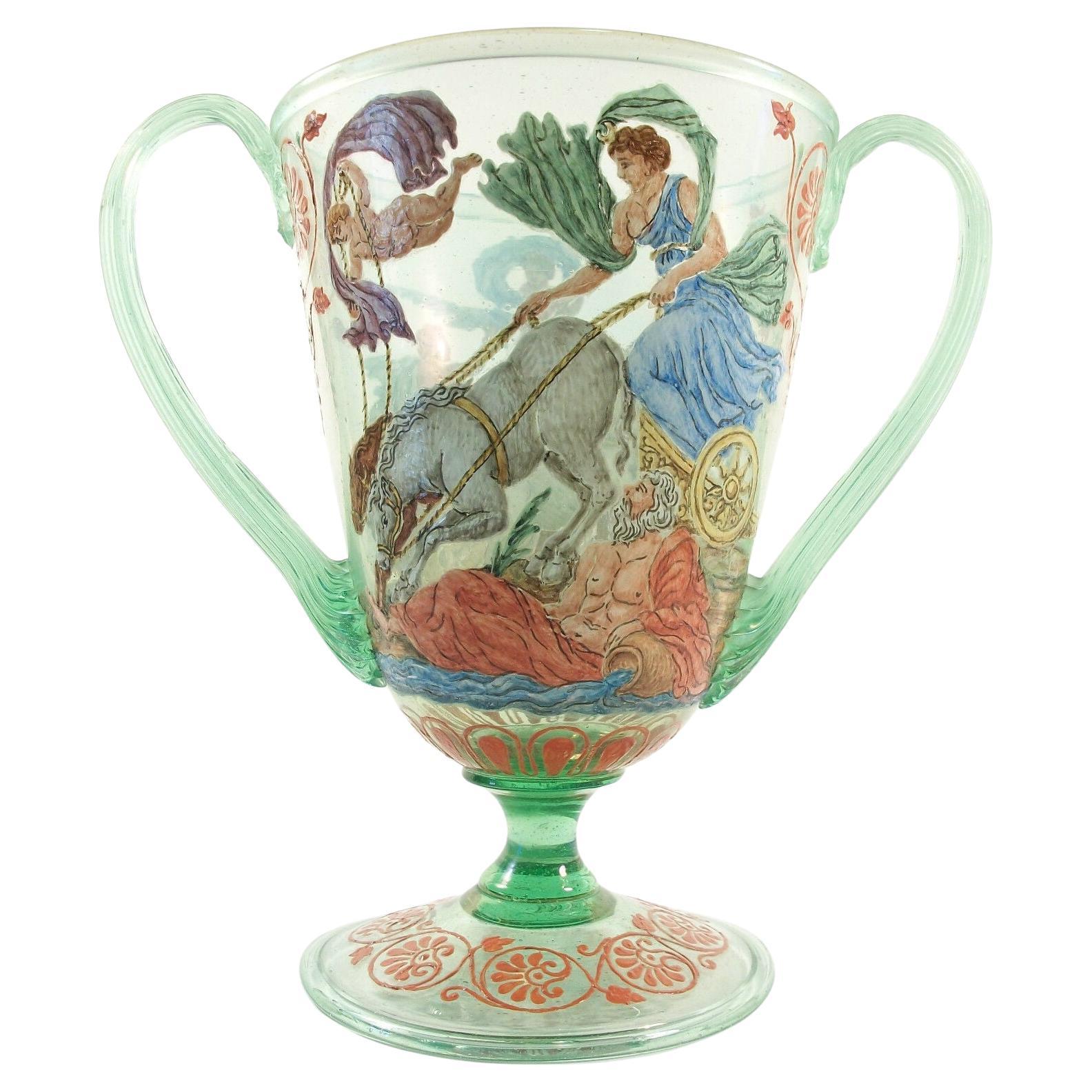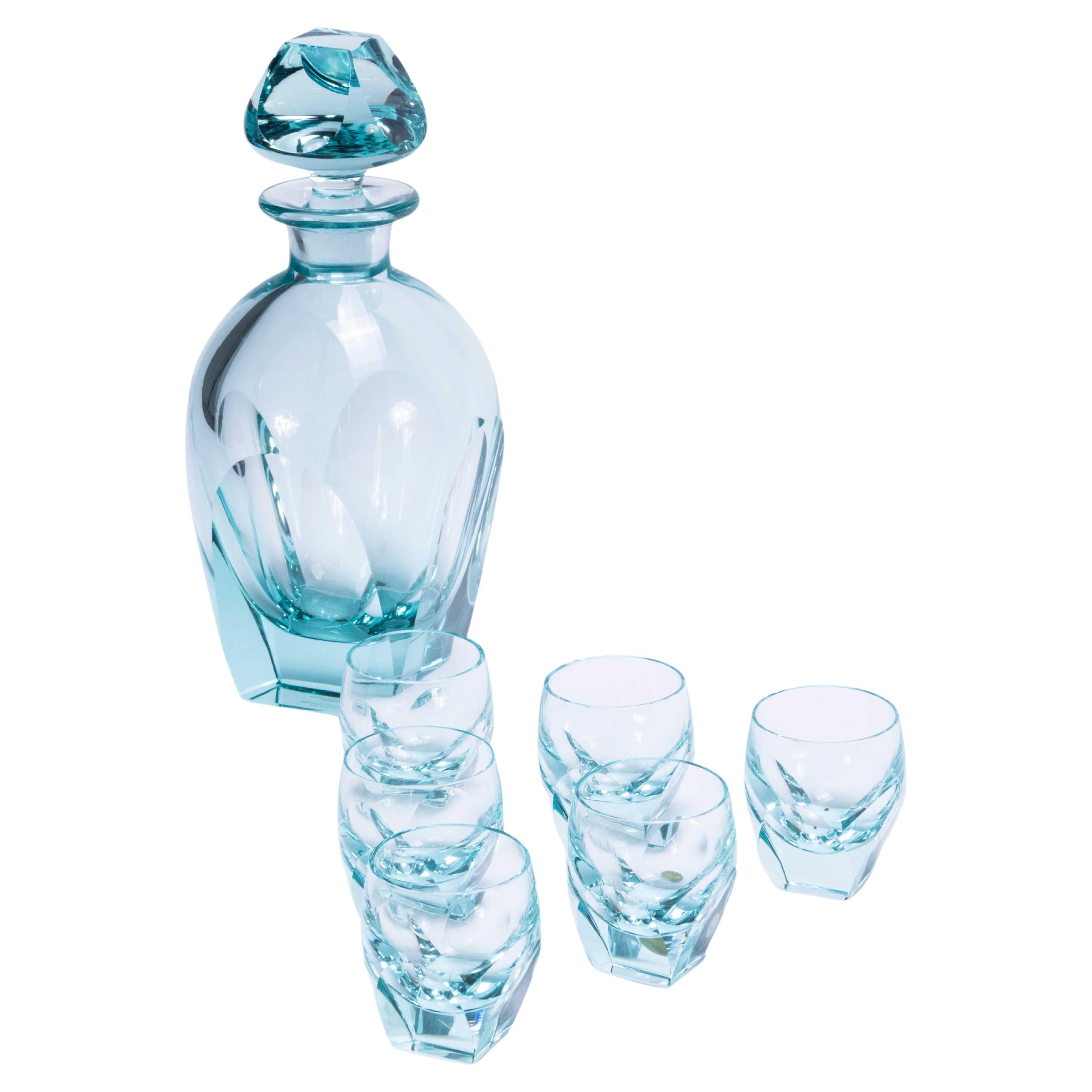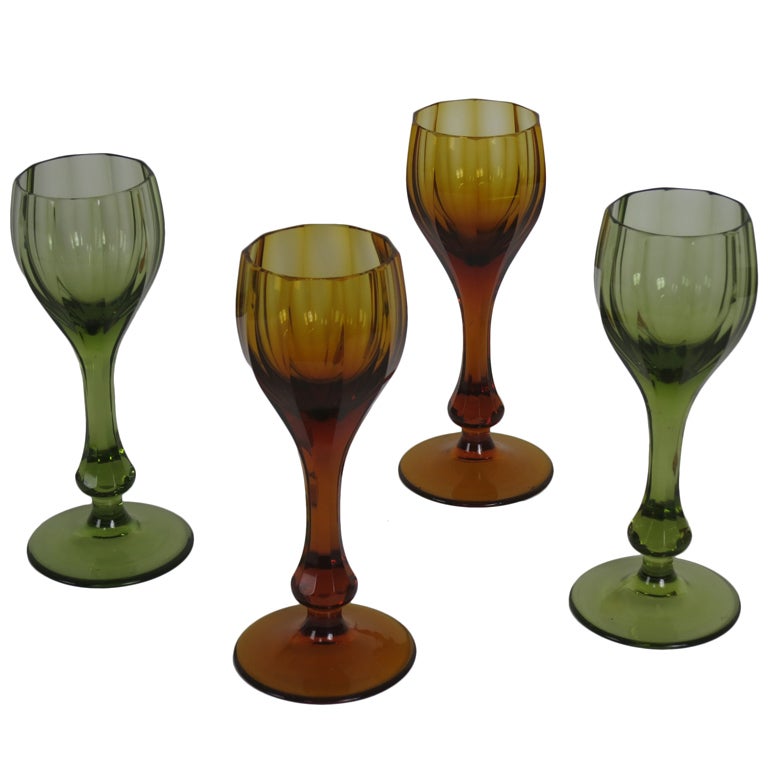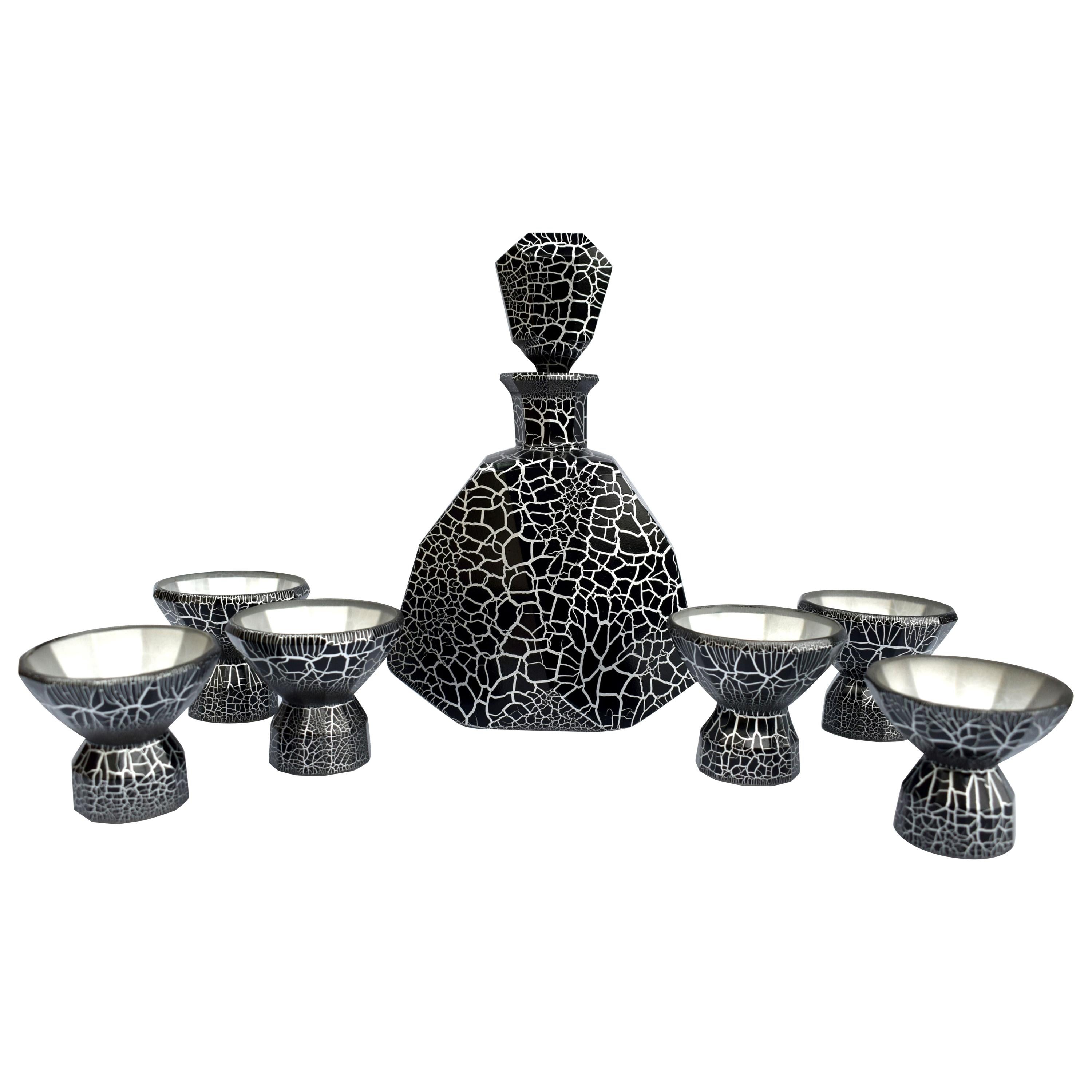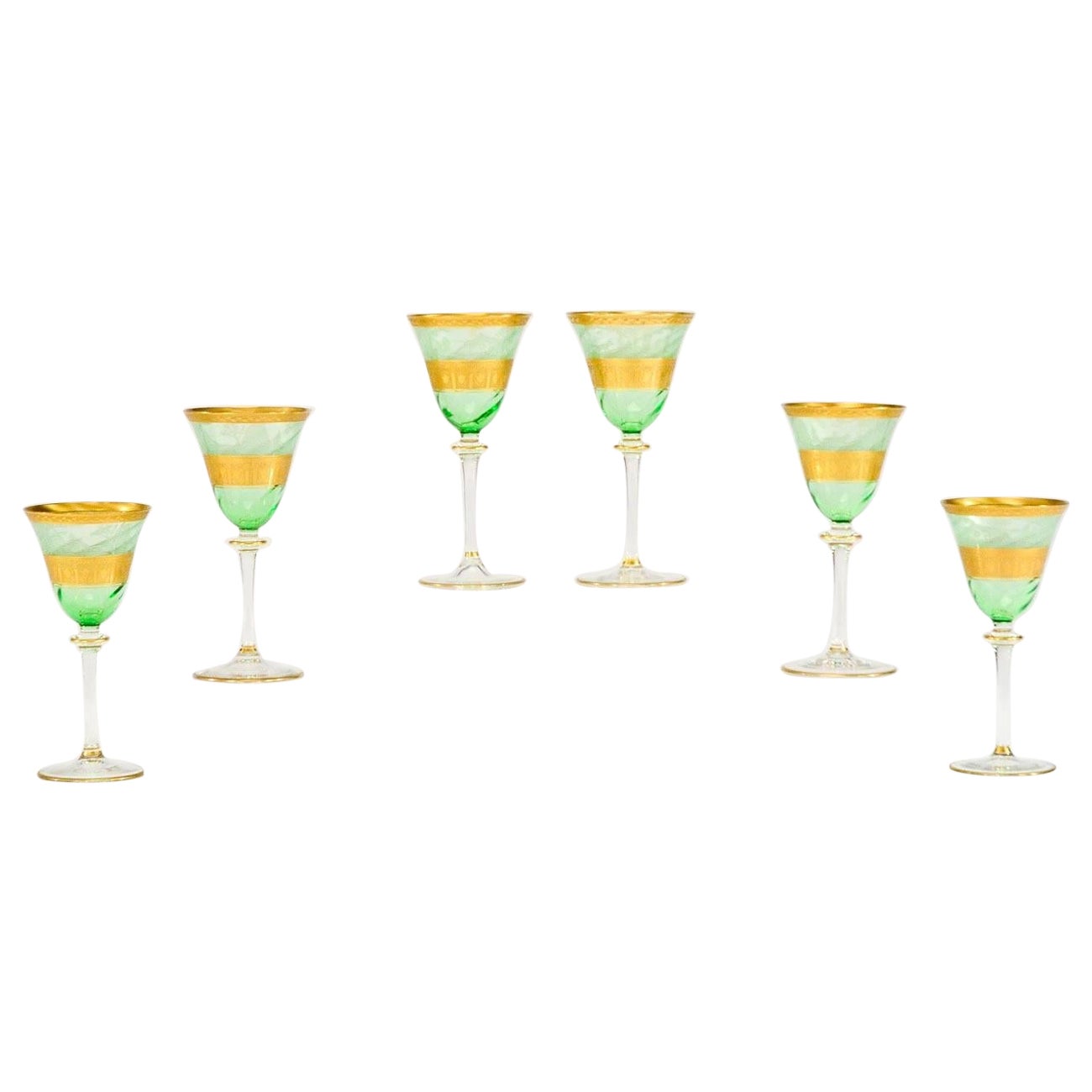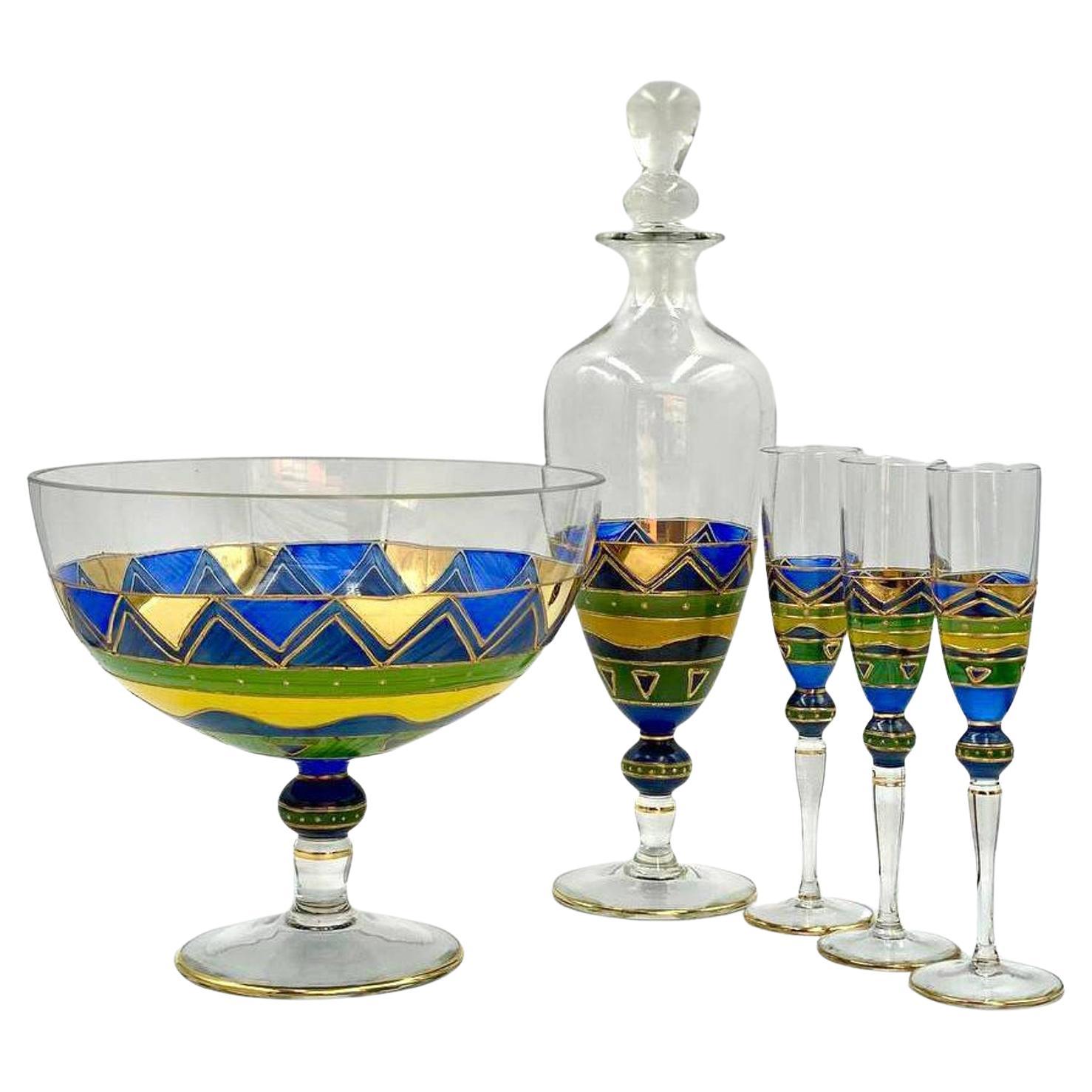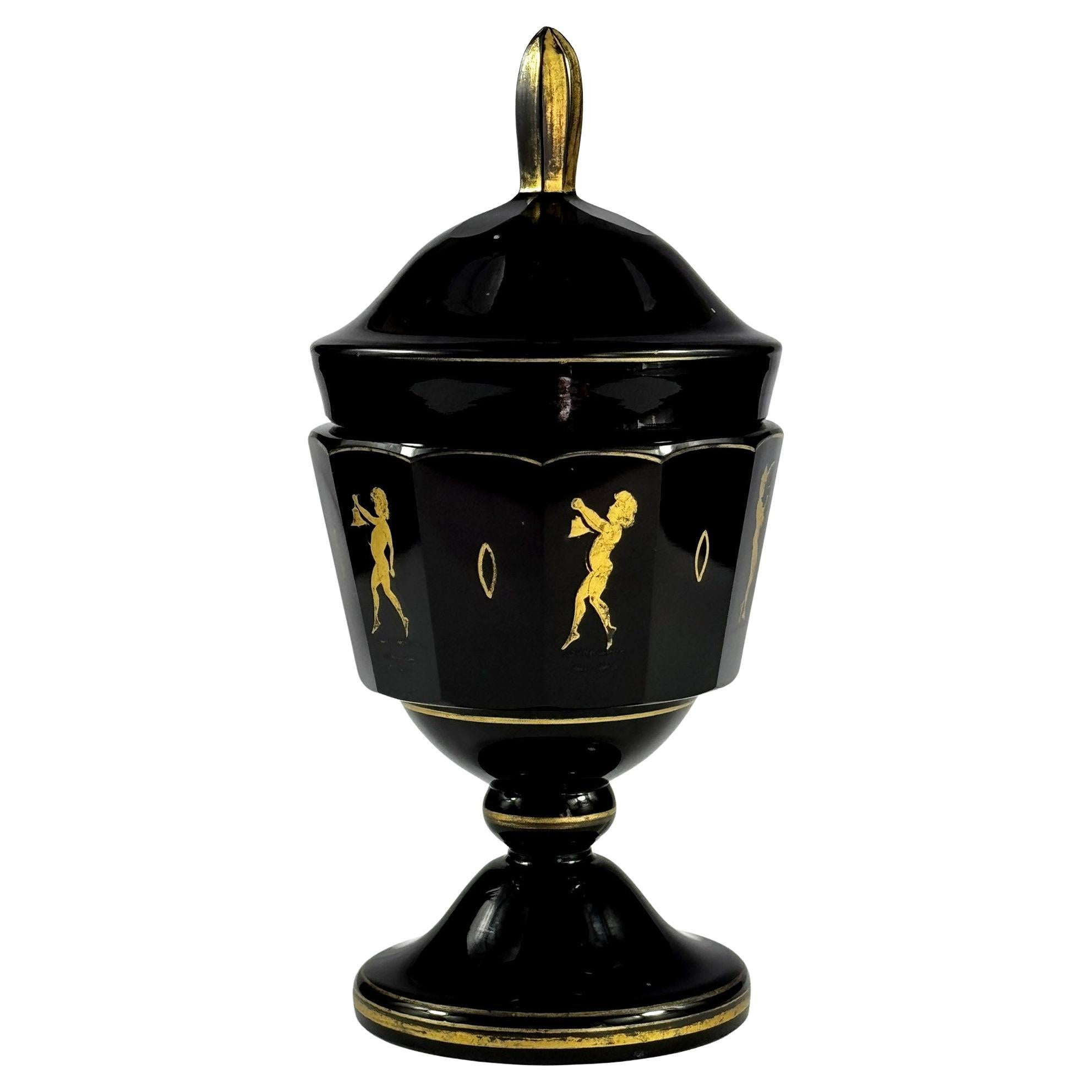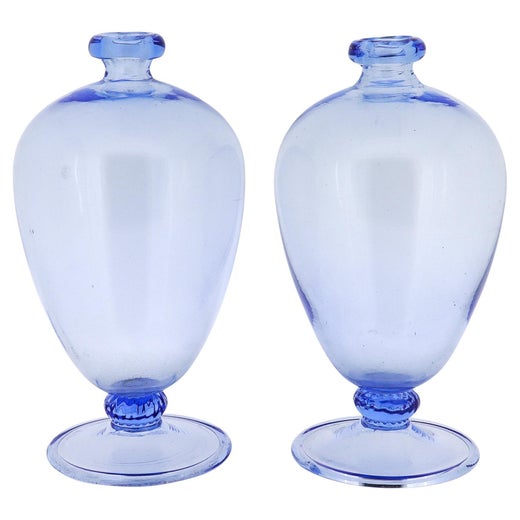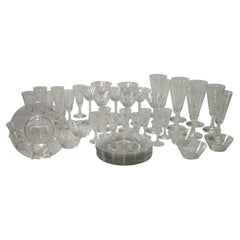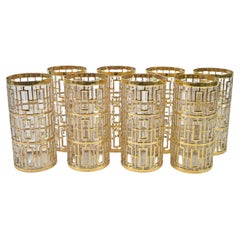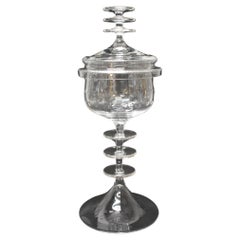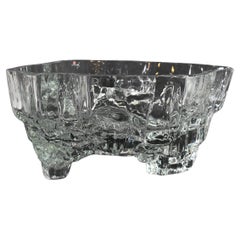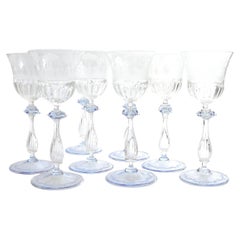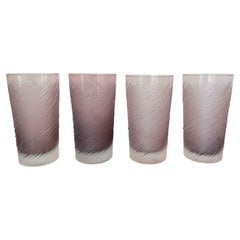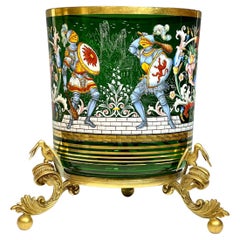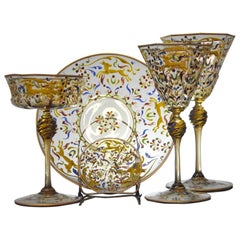
Hand Painted Moser Fifty-One-Piece Canine and Foliate Luncheon Set by Salviati
View Similar Items
Hand Painted Moser Fifty-One-Piece Canine and Foliate Luncheon Set by Salviati
About the Item
- Creator:Vittorio Zecchin (Designer)
- Dimensions:Height: 30 in (76.2 cm)Width: 30 in (76.2 cm)Depth: 30 in (76.2 cm)
- Sold As:Set of 51
- Materials and Techniques:
- Place of Origin:
- Period:
- Date of Manufacture:circa 1910s
- Condition:Minor wear to gold edges.
- Seller Location:Toledo, OH
- Reference Number:1stDibs: LU165823660002
Vittorio Zecchin
Vittorio Zecchin was a celebrated creative figure who worked across a range of disciplines including furniture design, textiles and more, but his contribution to modern Italian glassmaking is widely influential. Vintage Zecchin glass pieces and decorative objects have perfect symmetry and elegant luster; his artist's eye and masterful skills are evident in each work.
Zecchin developed an early passion for glassmaking but wasn't interested in the extensive ornamentation of 19th-century Venetian styles. He preferred simpler surfaces that emphasized a vessel’s form and bold, monochromatic palettes.
Zecchin was born on the island of Murano, near Venice. His father was a master glassblower. When he was 18, Zecchin enrolled in the Accademia di Belle Arti in Venice. He halted his studies in painting early and instead secured work at a glass furnace for a Murano workshop where he learned glassmaking techniques.
In 1909, Zecchin took part in the effort to transform the Venetian palace Ca’ Pesaro into an art museum. He worked alongside notable painters including Amedeo Modigliani, Teodoro Wolf Ferrari and Umberto Boccioni, and the colors he used and forms he integrated specifically reflected what he had learned in the workshop on Murano.
In 1913 and 1914, Zecchin partnered with Artisti Barovier to create glass mosaics in the Vienna Secessionist style. Some of these were in the 1914 Venice Biennale where they received critical acclaim. Barovier was eventually renamed Barovier & Toso, a name under which the company still operates today.
Zecchin later established a tapestry workshop on Murano and experimented with creating decorative glass pieces. Gradually moving his practice away from painting, by 1919 he was composing enameled glass pieces, tapestries and other textiles.
In 1921, the glass manufactory Vetri Soffiati Cappellin Venini & C. — which is today known as Venini & Co. — hired Zecchin as its artistic director. Along with streamlined shapes and uncomplicated colors, he instilled glass with a vivid intensity by immersing finished pieces in tin or titanium vapors while they were still hot. His style and vision earned him universal recognition in his field.
Zecchin left the firm in 1926 to pursue independent artistic interests, yet he continued to collaborate with the company’s designers. From 1934 until his death in 1947, Zecchin taught at numerous trade schools and institutions, passing on his artistic knowledge on to younger generations.
On 1stDibs, find vintage Vittorio Zecchin decorative objects, lighting, serveware and more.
More From This Seller
View AllAntique Early 19th Century American Glass
Glass, Cut Glass
Mid-20th Century Glass
Glass
Vintage 1960s Glass
Glass
Mid-20th Century Finnish Glass
Glass
20th Century Unknown Chinese Chippendale Bookcases
Wood
20th Century Unknown Aesthetic Movement Paintings
Porcelain
You May Also Like
Early 20th Century Italian Glass
Early 20th Century Italian Glass
Glass, Art Glass
21st Century and Contemporary Italian Modern Glass
Murano Glass
Antique 1890s Czech Bohemian Vases
Crystal
Antique 1890s Italian Neoclassical Revival Vases
Art Glass, Blown Glass, Murano Glass
Early 20th Century Italian Neoclassical Urns
Enamel
